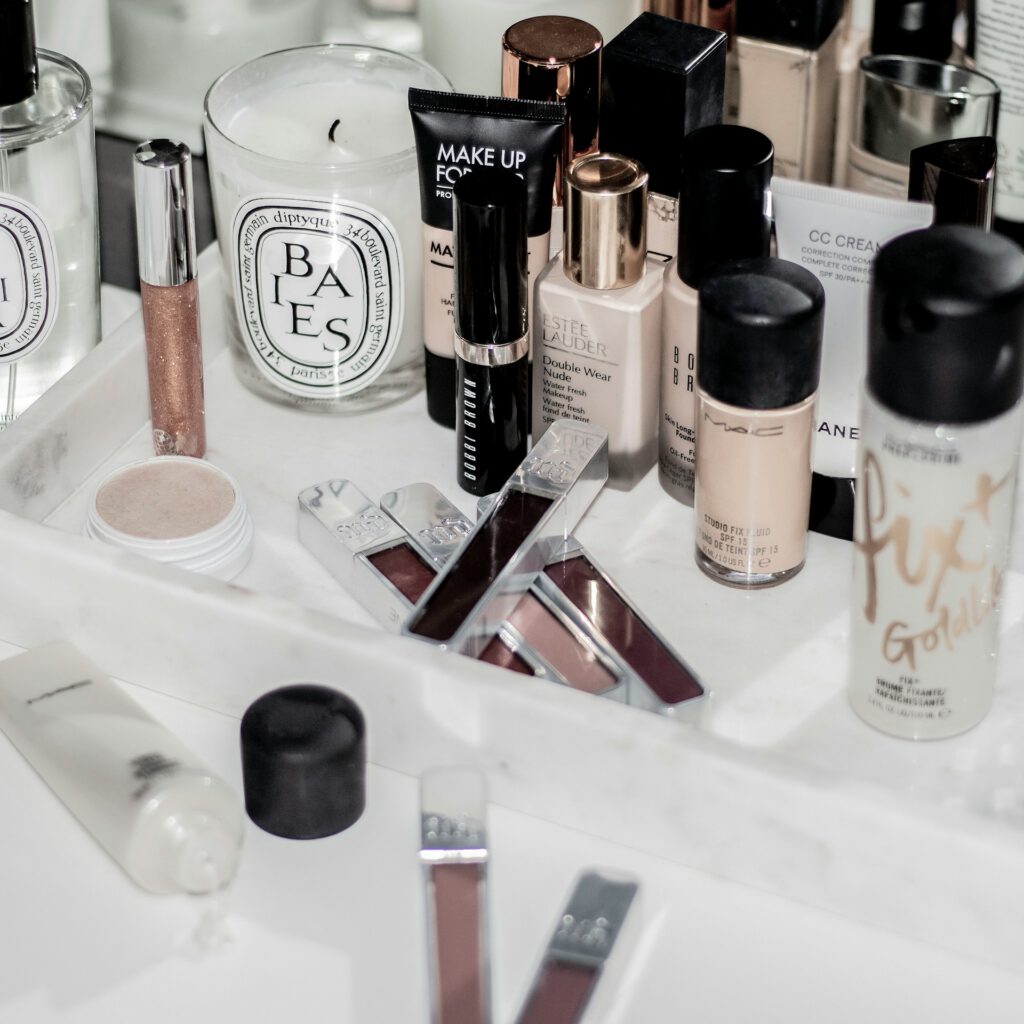Are the cosmetics in your makeup bag secretly harming your health? You might be surprised to learn that some of your favorite beauty products could contain harmful chemicals known as PFAS (per- and polyfluoroalkyl substances). These “forever chemicals” are used to make makeup products last longer, stay water-resistant, and look flawless, but they come with serious potential risks. As someone who’s been navigating the world of beauty for decades, I’ve become increasingly concerned about what goes on my skin—and I think you should be, too.
What Are PFAS and Why Are They in Cosmetics?
PFAS are a group of synthetic chemicals that have earned the nickname “forever chemicals” because they don’t easily break down in the environment or our bodies. They can accumulate over time, potentially leading to serious health concerns. In cosmetics, PFAS are often used to create waterproof qualities, increase durability, and enhance texture. Think of your long-lasting foundation, waterproof mascara, or your smudge-proof lipstick—those may owe some of their staying power to PFAS.
The use of PFAS in makeup is not just about enhancing beauty; it’s about making beauty last longer. But is it worth the potential risks to our health?

Health Risks Associated with PFAS
Research has shown that PFAS can have harmful effects on the body, including hormonal disruption, immune system damage, and an increased risk of certain cancers. These chemicals can enter the body through the skin when you apply makeup, or even by accidental ingestion—think about the lipstick you wear throughout the day. The Environmental Protection Agency (EPA) and other regulatory bodies have raised concerns about PFAS exposure, yet these chemicals are still commonly found in many products we use daily.
The cumulative nature of PFAS means that even small exposures over time can build up in the body, making it essential to limit exposure whenever possible. Particularly for those of us who have been using makeup for years, the potential long-term effects of PFAS in our beauty routines can be significant.
How to Identify PFAS in Makeup Products
The tricky part is that PFAS aren’t always easy to spot on ingredient lists. They often hide behind chemical names such as:
- Polytetrafluoroethylene (PTFE)
- Perfluorooctanoic Acid (PFOA)
- Perfluoroalkyl Phosphate (PAP)
These names aren’t exactly consumer-friendly, making it challenging for the average person to know what to avoid. One tip is to look for ingredients that contain the prefix “fluoro” or “perfluoro”—these are often a sign of PFAS lurking in your products.
Brands are also not legally required to disclose the presence of PFAS in their cosmetics, which means it often falls on us, the consumers, to be diligent and informed. This is why it’s so important to choose products from brands that prioritize transparency and clean ingredients.
The Beauty Industry’s Response
Thankfully, the beauty industry is starting to wake up to the dangers of PFAS, and there are growing numbers of brands committed to creating clean, safe, and PFAS-free products. Brands like ILIA, Kosas, and RMS Beauty are setting the standard for what cosmetics should be—safe for you, cruelty-free, and effective.
Moreover, some states in the U.S. have begun regulating the use of PFAS in cosmetics, pushing brands to rethink their formulations. As consumers demand transparency, we can hope to see more makeup lines committing to safer, cleaner ingredient lists.
How to Choose PFAS-Free Cosmetics
To protect yourself from PFAS in cosmetics, consider the following tips:
- Check the Ingredient List: Look for and avoid ingredients that mention “fluoro” or “perfluoro.” Be cautious of products labeled as “waterproof” or “long-lasting”—they are more likely to contain PFAS.
- Use Clean Beauty Databases: Resources like EWG’s Skin Deep Database or CleanProductList.com can help you identify safer options for makeup and skincare. These platforms review products based on ingredient safety, making it easier to choose PFAS-free options.
- Support Clean Beauty Brands: Many brands are now committed to transparency and clean formulations. Look for those that specifically advertise themselves as PFAS-free or participate in clean beauty movements.
- Ask Questions: Don’t hesitate to contact brands directly. Ask about the ingredients they use and if they test for PFAS. Brands that are truly clean will be transparent about their practices.
A Final Word on PFAS in Cosmetics
As we become more conscious about what we put in our bodies, it’s crucial to also consider what we put on our bodies. The beauty industry is slowly but surely moving towards cleaner, safer formulations, but it’s up to us as consumers to drive this change forward. By being informed and making deliberate choices, we can reduce our exposure to harmful chemicals like PFAS and advocate for a healthier future.
If you’re looking for PFAS-free beauty products or want to learn more about clean beauty, visit our PFAS-free list for a curated list of companies offering PFAS-free products, which can be filtered by cosmetic brands.
Takeaway: The hidden dangers of PFAS in makeup products are real, but with awareness and a few changes to your routine, you can reduce your exposure. Let’s prioritize our health while still enjoying the beauty products we love.ve.









